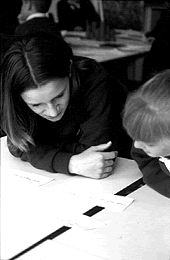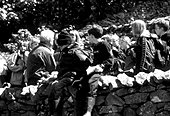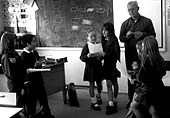| Sheepfolds to Visit | |
News | Education | Images | Accessibility | Search | Links |
 |
The poet Graham Mort worked at Yarlside School, Barrow in Furness and at Irthington Village School, Carlisle for a total of three days in each between May and November 2000. At Yarlside School, Graham ran an in-service training session with teachers before the project began, to set the scene for his workshops and to explain his working process. He then worked with a group of sixteen Year 5 children to develop their language and creative writing skills through individual responses and collaborative work. The starting point was their reactions to a walk along the Fellfoot Road at Casterton with its 16 sheepfolds, each one containing a huge boulder. As Graham Mort has written: In order to encourage the children to think like a writer, the poet gave each child a small hard-back notebook to write down their daily thoughts and observations, even asking them to sleep with it under the pillow. These became their private records, their book of dreams. However, when the journey along the sheepfolds walk was over and work on creating poetry began back in the classroom, the notes and ideas were written out or word-processed as individual responses and they then entered the public domain. With Graham's help, these were crafted into poems focussing on improving communication and making use of similes and metaphors. All the work went through several drafts which, in turn, were used to create a collaborative piece by selecting one or two key lines from each. The notion of a refrain was added (like a 'through stone') and the selected lines were arranged and 'built' to form a final poem. This very effective process of 'building' a poem, of drafting and redrafting, of cutting and pasting, of arranging and rearranging, was also the method of working which Graham Mort used at Irthington Village School. Here, he worked with fourteen Year 5/6 pupils who also produced drawings and paintings inspired by Andy Goldsworthy's sketches and their visit to the two folds at Mungrisdale. It was the physical and sensory reaction to this site visit and the circular nature of the folds themselves that influenced the content and form of the individual and collaborative poems in this second successful project. Artist Photographs: Graham Mort and pupils from Yarlside School in Casterton Fold; Selecting lines for collaborative poem, Yarlside School; final reading, Irthington Village School.
Notes
|
|
|
© 2002 Copyright
Information
|
.


